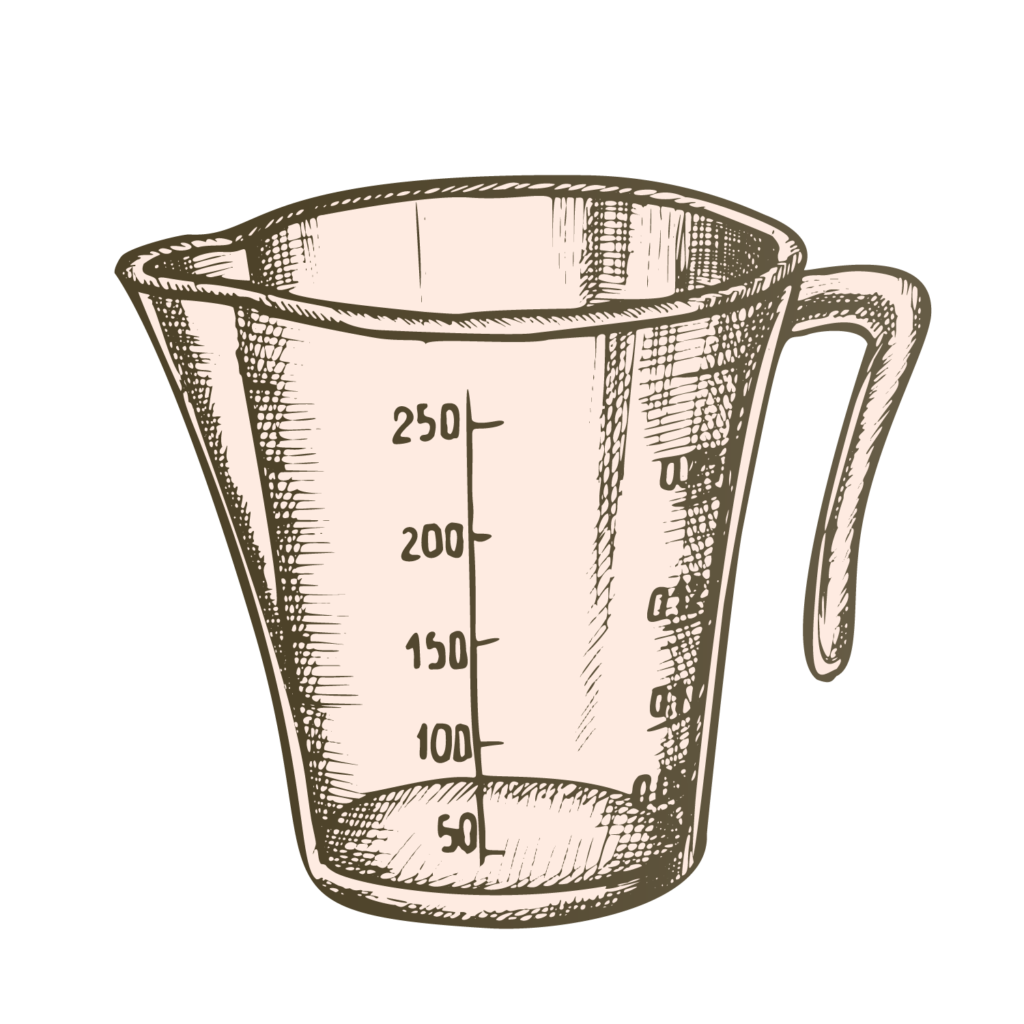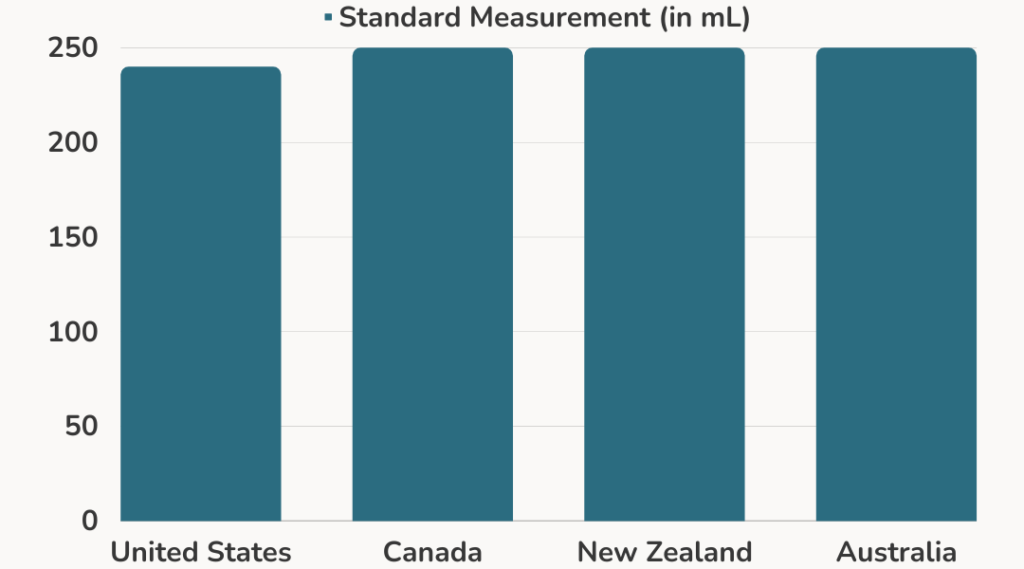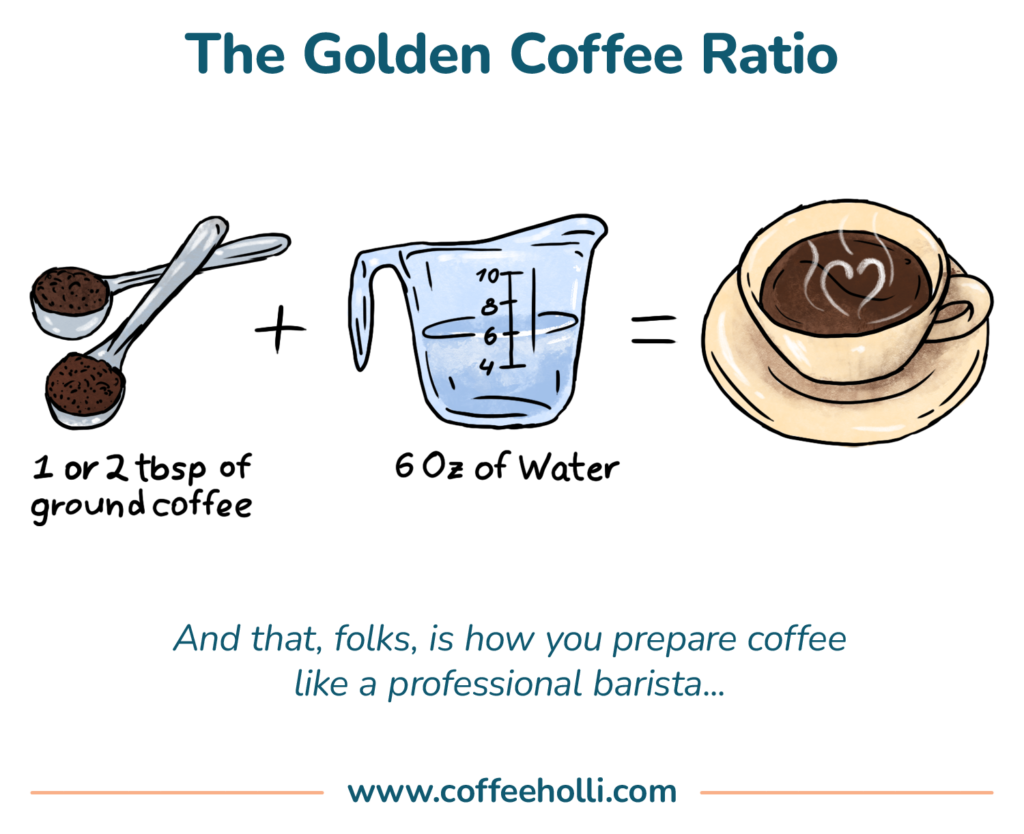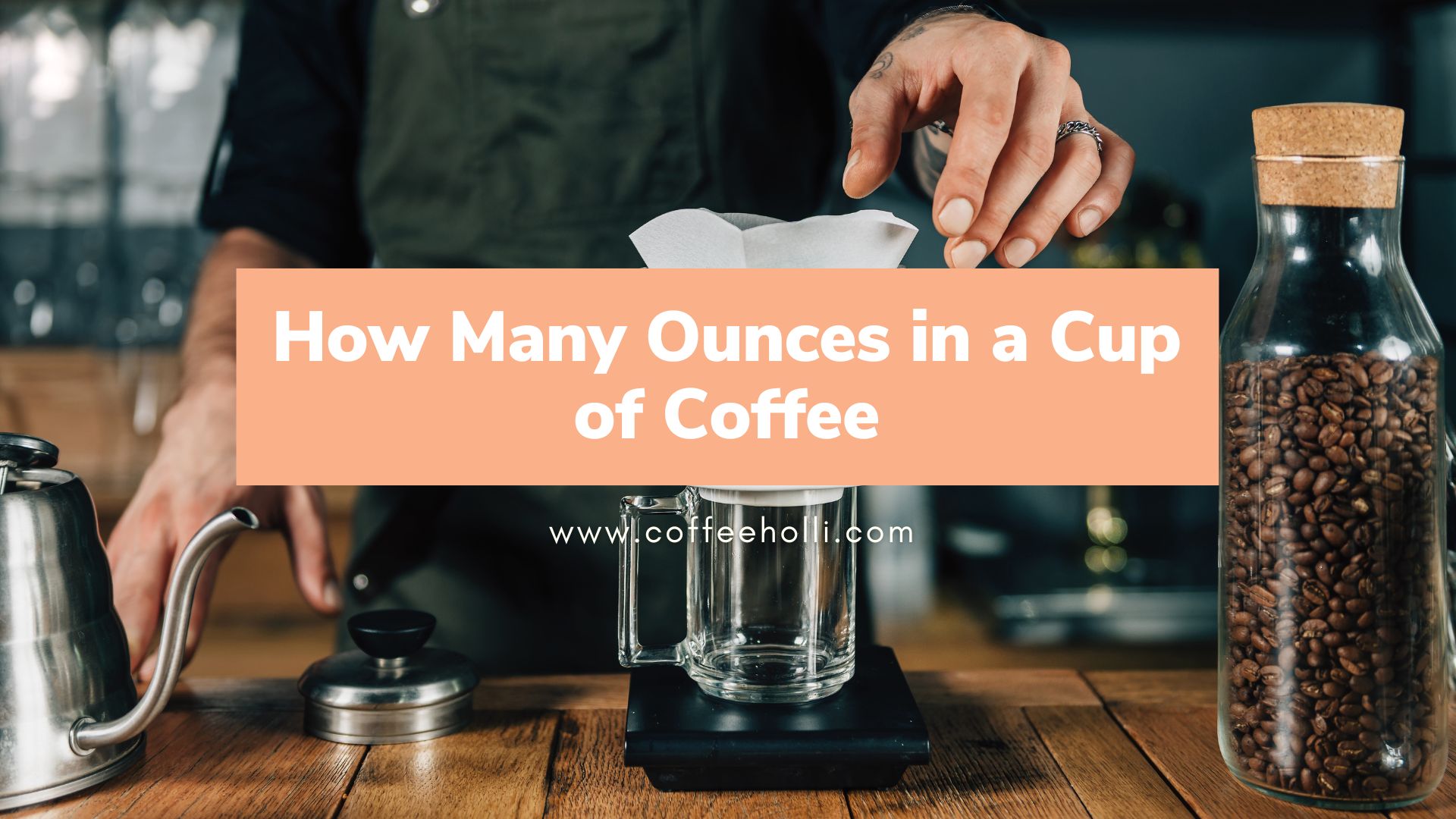Let’s be honest:
Brewing the perfect cup of coffee is one of the most rewarding achievements of a coffeeholic’s day.
I know many can relate.
But…
Have you ever wondered:
How many ounces go into a coffee cup? Or what is the ideal water-to-coffee ratio? Or even better, is there a proven formula for brewing an exceptional cup of Joe?
Well…
That’s what this post is all about and, today, I’ll answer all these questions and more…
Ready?
Table of Contents
The Science of Exceptional Brewing: How Many Ounces In a Cup of Coffee
As a unit of measurement, a standard cup carries 8 ounces. But according to experts, a cup of coffee should be about 5 to 6 ounces. It’s believed that this balances the caffeine benefits with the required dietary proportion. Furthermore, the ounces per cup depend on the cup size and quantity of coffee you’re brewing.
What is the Standard Definition of a Cup?

Get this:
The customary measure of a cup is 8 fluid ounces. This is also the standard sizing in the United States for cooking and drinking.
And:
For labeling purposes, one cup is often labeled as 240 mL. This is a little more than the actual conversion of 236.8 mL (from 8 fl oz).
What’s more?
Cup measurements vary by country.

For countries like Canada, New Zealand, and Australia, the standard cup measures about 250mL.
Interesting, right?
What is the Standard Definition of an Ounce?
On paper:
An ounce is a unit of weight/mass that is approximately 28.3 grams. And while many tend to use this term to refer to liquids too, the correct term should be Fluid Ounce.
With that in mind…
One fluid ounce is equivalent to 29.6 milliliters or an 8th of a US customary cup.
However:
The Code of Federal Regulations reports that the customary fluid ounce (fl oz) for food measurement in the United States should be 30mL.
Coffee Cups and Their Unique Sizes
It’s a known fact:
Coffee mugs come in various sizes.
For instance, 4 ounces is the acceptable measurement for a cup of coffee in the US. However, nutritionists recommend 5 to 6 ounces.
But if you are a fan of to-go coffee, you probably know that Starbucks cups go up to 30 ounces (the Trenta).
Typically:
Most coffee shops and coffee makers that offer various beverages. Thus, will have a set of standard sizes available.
In addition to the short, tall, grande, venti, and trenta sizes available in Starbucks, there are many other coffee cup sizes.
Therefore, cup size largely depends on the type of coffee you want or are brewing.
For example:
An espresso is served in a demitasse cup holding 2-4 ounces. Whereas, a travel mug typically holds about 16 ounces.
Interesting, right?
That said:
A standard cup, which has an 8-ounce capacity, should contain about 5-6 ounces of coffee.
Why?
Well, for starters, this prevents the coffee from spilling. More so, it leaves room for additives such as milk or cream.
Below are some common coffee varieties and their respective coffee cup sizes:
- Cappuccino Mugs – 5-6 Fl. Oz.
- Latte Coffee Mugs – 8-10 Fl. Oz.
- Iced Coffee Mugs – 12-16 Fl. Oz.
- Flat White Coffee Mugs – 5-6 Fl. Oz.
With that in mind:
Factors That Affect The Cup Size Of Coffee Include…
The Brew Type
Some strong brews, such as espressos, are meant to be consumed black and in smaller quantities.
Meanwhile, coffee brews like lattes require a bigger cup to accommodate additives like milk and sweeteners.
The Grind Size of the Coffee Beans
Smaller ground coffee beans produce stronger, smaller cups of coffee because the coffee saturation level is high in the mixture.
Coarse coffee beans are used to make large and less concentrated cups of coffee, such as cold brews.
Get it?
The Golden Coffee Ratio: How To Prepare Coffee Like a Professional Barista
First of all:
It is essential to know how many ounces your coffee cup holds in order to get the correct coffee-to-water ratio.
On the plus side, most coffee makers are calibrated to automatically measure your coffee grounds in the right ratio.
But:
If you are doing it manually, you need to get the ratio right.
Ideally:
The standard coffee-to-water ratio is 1.5-2g of coffee grounds per 29.6 ml (1 fluid ounce) of water.

It is advisable to use a scale rather than a measuring cup/spoon. That way, you’d get a more accurate measurement when you weigh coffee beans by mass.
Examples?
Well:
Suppose you want to brew two standard cups of coffee with 12 or 16 ounces of water…? From the ratio, you’d need about 18-32g of coffee grounds, right?
But:
Surprise – Surprise!
That’s not the actual Golden Ratio.
The National Coffee Association puts the golden ratio at 1 or 2 tablespoons of coffee grounds per 6 ounces of water.
However:
You can adjust the volume of water to brew your coffee depending on how strong you want it to be. Even better, it is okay to experiment with different coffee-to-water ratios to find what works best for you.
Pro Tip:
An easier way to get more control over your brew is by considering using the pour-over method.
Easy Peasy!
The Different Cup Measurement System
| Cup | TBSP | TSP | Fluid (Oz) | Milliliter |
|---|---|---|---|---|
| 1C | 16 Tbsp | 48 tsp | 8 oz | 237 ml |
| 3/4C | 12 Tbsp | 36 tsp | 6 oz | 177 ml |
| 2/3C | 10 Tbsp + 2 tsp | 32 tsp | 5 1/2 oz | 158 ml |
| 1/2C | 8 Tbsp | 24 tsp | 4 oz | 118 ml |
| 1/3C | 5 Tbsp + 1 tsp | 16 tsp ₂ | 2 2/3 oz | 79 ml |
| 1/4C | 4 Tbsp | 12 tsp | 2 oz | 59 ml |
| 1/6C | 2 Tbsp + 2 tsp | 8 tsp | 1 1/3 oz | 40 ml |
| 1/8C | 2 Tbsp | 6 tsp | 1 oz | 30 ml |
| 1/16C | 1 Tbsp | 3 tsp | 1/2 oz | 15 ml |
The truth is:
Varying measurement methods adopted by different countries are another reason why coffee cups come in various sizes.
Consequently, the perfect cup size for your coffee type is dependent on these measurement conventions.
For example:
The United States uses the standard system that measures a cup at 240mL. However, there are other countries with different standard cup measurements.
- In Japan, the standard cup measurement is 200mL. However, traditional Japanuses a standard cup measurement of 180.4mL.
- In Russia, there are two accepted standard cup measurements, which are 200 and 250mL. Cups for Alcoholic beverages and other liquids had a measurement of 123 and 246mL, respectively.
- In Canada, the standard cup measurement is 250mL. Nevertheless, a conventional Canadian cup is about 227mL.
- In Latin America, the standard cup measurement is either 200 or 250mL, depending on the country.
Pro Tip:
It’s wise to get familiar with these different measurements in case your coffee machine is manufactured in a different country.
Conclusion
Well:
It might seem very easy to make a cup of coffee. However, crucial factors come to play before you can brew a perfect one.
They include:
- Brewing your coffee using the ideal coffee-to-water ratio (the golden ratio)
- Ensuring all your measurements are accurate
- Using the right cup size for your coffee type
The best part is:
Modern coffee makers tend to give accurate measurements and brewing ratios.
Also, manually adjusting the volume of water durng a pour-over method determines how strong your coffee will be.
With that in mind:
Feel free to share your thoughts, experiences, and questions below. I’ll be happy to hear from you in the comments.
Frequently Asked Questions
The standard liquid measurement in a cup is 8 oz. However, the National Coffee Association and medical professionals agree that 6 oz is the ideal and nutritionally appropriate serving size.
The standard measurement of a normal coffee cup in the United States is 6 oz; which is about 177 milliliters. Nevertheless, coffee can be served in various cup sizes, depending on the type of coffee drink you are having.
A 4 oz cup of coffee is usually used to serve single or double-shot espresso drinks. They are also used for espresso-based drinks.
A cup of coffee is typically 6 ounces in size as per expert recommendation. Coffee professionals say that 6 oz java brings out the caffeine benefits and the nutritional portioning required by the average person.


